Five -star red flag rose like this
Author:Guangming Daily Time:2022.09.17
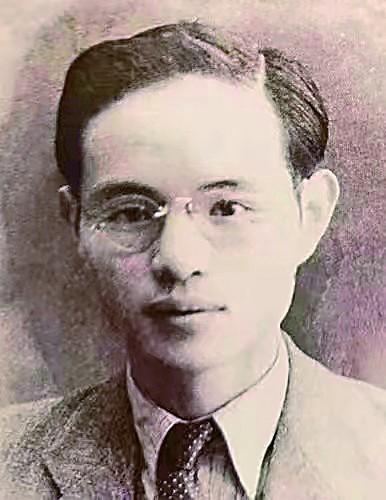
The National Flag Education Exhibition Hall of the Four Memorial Hall of the Communist Party of China, the youth Zeng Lian Song provided
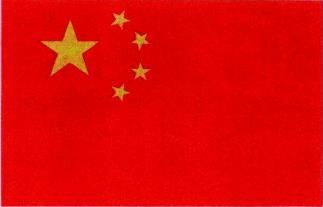
No. 32 of Fuzi, the national flag pattern of Zeng Liansong designed
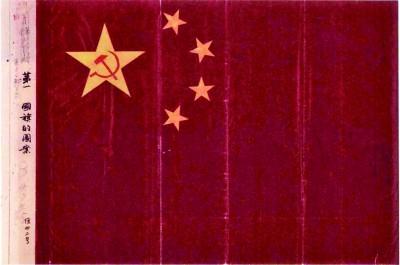
The national flag pattern designed by Zeng Liansong
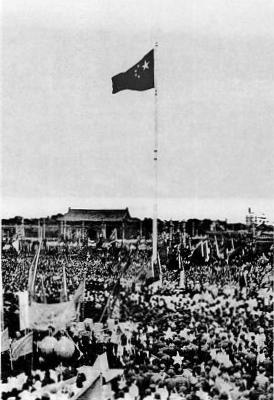
On October 1, 1949, the first five -star red flag was promoted in front of Tiananmen.
【Red Culture Pickle】
Since July 14, 1949, "People's Daily" and "Guangming Daily" and other "Solicitation of the National Essence and National Anthem Cingle Calculation" were published. When Zeng Liansong learned the news from the newspaper, his identity was in the conversion of the deputy section of the deputy section of the Secretary of the Modern Economic News Agency to the deputy department of the Shanghai Supply and Marketing Cooperative Society Research Society.
I hope to re -join the party and fail to do so.
The Modern Economic News Agency is the economic intelligence base edited publishing economic news information under the leadership of the Communist Party of China, and it has also become a united front position for the united economy, industry and commerce patriotic democracy.
Zeng Liansong joined the party in 1938. Later, due to the Kuomintang's stubborn faction, the second anti -communist climax was set off. In order to preserve the power of life, the superior party organization decided to allow Zeng Lian Song to evacuate quickly. Zeng Lian Song was originally going to participate in the New Fourth Army, because the outbreak of the southern Anhui Incident had to turn around Zhejiang. At this time, the superior party organization had also evacuated, and had lost contact with the organization.
Because of this, at the beginning of Shanghai's liberation, Zeng Liansong was very urgent to return to the party organization. However, his application for admission to the party was quickly retreated after the transfer of the organization department. Zeng Liansong lost its organizational relationship in the past 9 years, and the set of things in Shanghai was unable to take care of it. He confirmed himself in actual work and became a strong wish for Zeng Lianchang's heart.
It was with this strength that Zeng Liansong began to conceive the national flag pattern. He was still living in the modern economic news agency dormitory at the time, located in the intersection of Jinning Road, Jinhua Shan Road. It was a temporary board room in a barren waste garden. Zeng Lianlong lived on the second floor and had a small attic on the top of the summer. Zeng Liansong recalled afterwards: "For more than ten days, sometimes they are imaginative, sometimes painted in the desk, and there are a lot of abandoned drawings. I first focus on the characteristics of the regime. The guarantee of victory is that the people are united around the party. This meaning is expressed on the national flag. To this end, I designed the red symbol of the revolution and a big five -pointed star with a sickle ax in the inside symbolizing the Communist Party and the people's army. " When he moved the big five -pointed star and the four small pentagram around it to the top left of the flag, the national flag pattern suddenly opened up.
A few days after August in early August, Zeng Liansong completed the design of the flag pattern. Not only did he use wax light paper to stick the national flag pattern, he also wrote the "meaning of the national flag" and the "national flag system", and it was originally replicated. Subsequently, he took another paper and left the modern economic news agency as the address address as the bottom page. On the top of the sealing paper, he wrote the words "National Banner and National Anthem" and "Designer Zeng Liansong August 1949". After the incident, Zeng Liansong carefully folded the national flag design draft. In order to avoid leaving a crease on the big five -horn star, he intends to make another discount between the big five -pointed star and the small five -pointed star, and then the text is packed in the explanation text. Essence
On August 11, the Office of the Sixth Group of the New CPPCC received the design draft from Zeng Lianchang. At that time, the receiving number was "No. 1232", and the time of time was 9 days. On August 14th, the sixth group of the sixth group was collected by the submitted manuscript a few days ago, and re -registered Zeng Lianong's works as "1305", but classified this as "the national anthem draft".
Zeng Liansong's design was not the best plan at first, and the graphics and text were modified
On August 22, the Sixth Group National Flag National Essence Primary Election Committee held the first meeting in the Beijing Hotel, from the national flag manuscript of the national flag manuscript from 1500 (later to 1920 and 2992 patterns) pattern.
Two days later (August 24), the sixth group held the third plenary meeting. For business discussions, the group decided: Although the national flag pattern has a quarter of the design draft on the top left, although it is more beautiful, it is similar to the national flag of the Republic of China during the period of the United States and the Kuomintang period. Sickle form. The two designs of Zeng Liansong stand out with "lethality". Participants agreed that "Election Eleventh Election" is better. The 1/3 part of the flag is a white background, a red pentagram is decorated on the left side, and 2/3 of the lower 2/3 is red background: "The red and white two -color distribution is appropriate, It is easy to make; the red star can be seen without floating on the corner. The red star style is not the same as other countries. It is beautiful in color and is suitable for soliciting regulations in symbols. . "Because Guo Moruo drew a star pattern with a star on the red flag and two blue strips (later changed to yellow) on the red flag. The sixth group asked for 17 national flag patterns to be reviewed by the Standing Committee for this. Among them, the "Twenty" may be the national flag pattern designed by Zeng Liansong.
Two days later (August 26) held the fourth meeting of the Standing Committee of the New CPPCC Preparatory Association. On behalf of the Sixth Group, Ma Xulun made a report to submit the national flag pattern such as "Election Eleven" to the meeting. The sixth group solicited the national flag pattern. Seeing that the major events are done, but the peak turns. On September 14th, the sixth group held the fourth plenary meeting. Ma Xulun conveyed the relevant opinions -Chen Jiageng's trustees who have not yet reached the country have conveyed opinions, thinking that the white of "Election Eleven" is not good. Unexpectedly. More importantly, the leadership of the Central Committee of the Communist Party of China and the Central Committee of the Communist Party of China in the Central Committee of the Communist Party of China was the "Election No. 17" (on the top left of the red flag on the red flag of the yellow pentagram, and there is a yellow horizontal bar) the national flag pattern, but it feels like "a yellow line puts the revolutionary class. After cutting off, the yellow line of the pattern was changed ", and the left side of the yellow line was cut off. Ma Xulun also conveyed Mao Zedong's words: "The national flag does not have to show the workers and peasants alliances, which can be shown in the national emblem." In view of the national flag that must be discussed and approved at the new CPPCC conference opened a week later, and it must be provided for the Meeting of the Standing Committee on the 17th For reference, for this, the group voted on the spot, taking "No. 17" as the first recommendation solution, and decided to select the national flag pattern collected, print the national flag pattern booklet, to prepare for the representatives of the CPPCC for discussion. As a result, the "National Flag Pattern Reference Data" was printed. This data booklet received a total of 38 national flag patterns. The receiving patterns were compiled by the "compound word" due to the re -election. Among them, there are well -known artists such as Zhu De, Wu Yuzhang, and Guo Moruo, as well as well -known artists such as Zhang Ye, Zhong Ling, Yang, and Mo Zongjiang. Design dedication. Among them, the "No. 32 of the Compound Character" is Zeng Liansong's design. However, the graphics and text have been modified, not only the big five -pointed star removed the sickle ax pattern, but also simplified and corrected the explanatory text. The four major classes and groups such as democracy have been adjusted to: "The working class, the peasant class, the petty bourgeoisie, and the national bourgeoisie have been adjusted." It is consistent with Mao Zedong's "On the Democratic Political Democracy of the People's Democracy". Accordingly, according to Peng Guanghan, the secretary of the sixth group, it was concluded by the group's discussion.
"Election No. 17" was generally questioned, and Mao Zedong and Zhou Enlai attracted attention to Zeng Lian Song design
On September 21, the first plenary session of the Chinese People's Political Consultative Conference opened. Mao Zedong gave a speech and mentioned that the conference wanted to elected the national flag of the People's Republic of China, and the sentence "standing up one -quarter of the total number of human beings" has been impressed by all participants.
On September 23, the sixth group convened all CPPCC members to be divided into 11 groups and held a group meeting to discuss the national flag, the capital, and the year. The "Guide of the National Flag and National Emblem Patterns" in the "National Flag Pattern References" is introduced in four categories of the national flag. The first three types of design patterns are either "the feeling of imitating the Soviet flag", or "difficult to be beautiful, and the diagram is complicated, which does not match the purpose of 'simple'", or "concept design, none of them". There is only the fourth type of "better than other types (such as the first word); covering the red symbol of the revolution, the five -pointed star symbolizes the joint regime led by the Communist Party, and the yellow bar can represent the Yellow River of the Chinese nation's birthplace." Nevertheless, the participants have made many different opinions.
That night, the sixth group of the meeting was discussed in the group, and found that the national flag pattern had the most opinions. Most representatives agree that there is a star and a yellow bar on the corner of the red flag, but there are slight opinions on the color of the star, the thickness, position, length and symbol of the yellow bar, the thickness, position, length and symbol of the star. In addition, there are three types of opinions worth noting. First, some people advocate that they should not avoid using a sickle ax, otherwise workers and peasants cannot be expressed. The second is to advocate the use of Zhu De's fifth word (red pentagram blue flag pattern), with 18 people such as Zhang Zhizhong, Shao Lizi, and Chen Xianxian. Third, 15 people such as Hu Juewen, Li Tanchen, and Lei Rongke advocated the use of the 32nd of the compound word, that is, Zeng Liansong's design pattern.
In terms of simply votes, the fourth type of design pattern is added to the fourth type of design pattern. The votes are added, and the favor of the votes exceeds half of the CPPCC representatives. It stands to reason that this has been approved by most representatives. However, participants were generally dissatisfied with this result. Some representatives recommend other patterns. In short, the representatives of the CPPCC were scattered and indifferent to the national flag pattern. At that time, Peng Guanghan, the sixth group of secretary, lived in Zhongnanhai. Shen Yanbing instructed Peng to report to Mao Zedong and Zhou Enlai as soon as possible.
Zhou Enlai, who was abnormal in official duties, listened to Peng Guanghan's report that night and asked the suggestions. Peng Guanghan recalled that he recommended Zeng Liansong's design pattern to Zhou Enlai. According to the "Statistics of the National Flag Group Discussion Comprehensive Opinions", such as the first, second, and 3rd of compound characters, ranked first, and the first selection No. 4 (in fact, No. 17, 11 Number) is second, then Zeng Liansong designed fifth in 15 votes. In fact, the 37th number of compound characters also has 15 votes. Because it is not fundamentally different from the first, second, and third, it can be ignored.而得票在第三、第四的,分别为复字第九号(20票,张仃、钟灵、周光谊设计,红五星黄地红旗)、复字第十五号(18票,朱德设计,红Pentagon blue flag). With a few comparisons, Zhou Enlai attracted attention to the 32nd of Fuzi, which is Zeng Liansong's design pattern. It is quite coincidental that, on the night of September 23, Mao Zedong, Zhu Deyan asked 26 Kuomintang uprising generals including Cheng Qian, Fu Zuoyi, and Li Shucheng. Zhang Zhizhong bluntly pointed out that he opposed the use of a star and a horizontal bar to represent the Yellow River pattern. The red background represents the country and the revolution. There is a bar in the middle, which is suspected of split the country and split the revolution. Moreover, it is not scientific to represent the Yellow River with a bar. The common people will think of the golden hoop stick of the monkeys! This view is quite representative among the CPPCC representatives. After two days (September 25), a member of Wu Zaoxi wrote the opinions that coincided with this.
After encountering disruptive opinions, Mao Zedong and Zhou Enlai paid attention to the 32nd of the complexity designed by Zeng Liansong after encountering a subversive opinion of the national flag reservation plan. Political style. On the night of September 25th, Mao Zedong convened the national flag and national anthem of the National Anthem of the National Anthem of the National Anthem of the National Anthem of the National Anthem of the National Anthem of the National Anthem of the National Anthem. The pattern says "our pattern shows our unity of the people's revolutionary people. Now we must unite and unite in the future. Therefore, it is good to be in the future, unity and revolution." The red ground five -star flag scheme was unanimously approved and praised by those here.
The first National CPPCC passed the New China flag plan, and the "Five Star Red Flag" was named after this name
On September 27, the Chinese People's Political Consultative Conference held the sixth day of the first plenary session to vote for the New China ’s national flag national emblem. The national flag plan designed by Zeng Liansong not only was passed smoothly, but also received the name of the "Five Star Red Flag". Zeng Liansong's design draft only emphasizes the meaning of "golden giant pentagram" and "four golden medium pentagrams", and mentioning the "flag as a red land", but it did not propose that the flag should be called the flag.
At the meeting that day, Ma Xulun's National Anthem Plan Committee submitted to the conference on behalf of the National Anthem of the National Anthem of the National Anthem of the National Anthem of the National Anthem of the National Anthem of the National Capital of the National Capital. The flag, red symbolizes the revolution, five yellow stars symbolize the unity of the Chinese revolution. "
After full discussion, the "Four Draft Draft" all passed the conference voting. On the day, the meeting briefly recorded the manuscript: "The flag of the People's Republic of China is red ...", and then changed the word "red" to the word "five -star red flag". This record shows that when the report passed the national flag draft, the name of the "five -star red flag" was proposed. After hearing a new statement, this was changed.
According to Zhou Enlai's instructions, the four staff members of the conference secretary office came to power, each holding one corner, and the five -star red flag of red silk and yellow star. Xia Yan's eyes were fast, and the time to quickly write down the historical scene on the right side of the five -star red flag "decomposition map": "September 27, 1949, 9:35 pm, passed the same consistent."
Ai Qing, who hired experts in the sixth group, created a poem "National Flag" on the same day, expressing the birth of his grand event and prove the "five -star red flag".
Beautiful flag
Solemn flag
Revolutionary Banner
United flag
Four Venus
Fight for a big star
All the hearts
Revolution towards the people
We love five -star red flag
Like your heart
Be lost
There is no life
We guard it
It is our dignity
We follow it
It leads us forward
Where the flag is
Win there
On September 29th, the 8th edition of "People's Daily" published this poem. The new term "Five Star Red Flags" in the poem line further accelerates its spread in society with the mouthful poems.
On October 1, the founding ceremony was held in Tiananmen Square.
(Author: Wu Haiyong, the Second Division of the Party History Research Office of the Shanghai Municipal Party Committee of the Communist Party of China, researcher at the Great Construction Party Spirit Research Center of the Communist Party of China)
- END -
Tianjin Academy of Fine Arts and British Creative Arts signed a 2+1 double master's degree project cooperation agreement
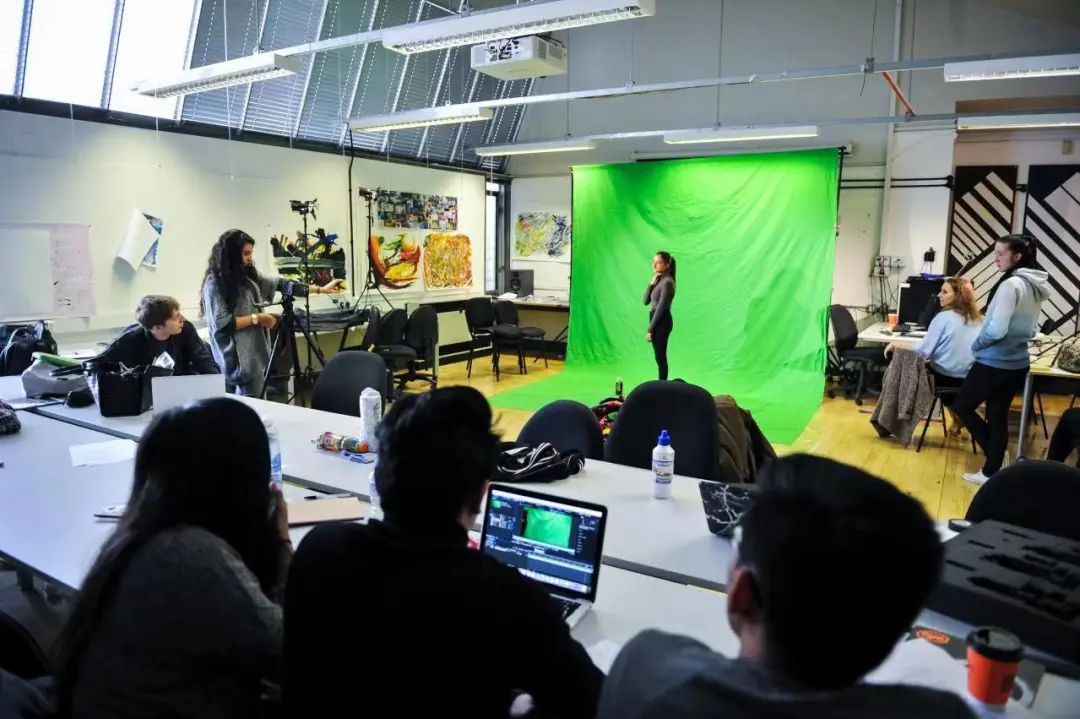
In May 2019, Tianjin Academy of Fine Arts established friendly relations with Brit...
Guan Pu Xue, Li Yan oil painting work exhibition opened in Jinan
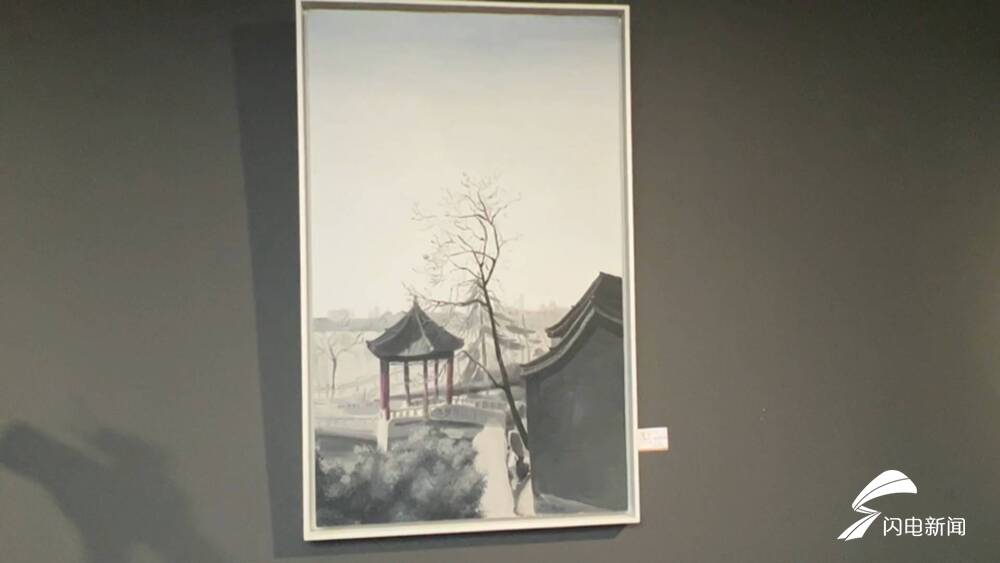
Qilu.com · Lightning News, August 21, August 20th, Guan Pu Xue and Li Yan oil pa...